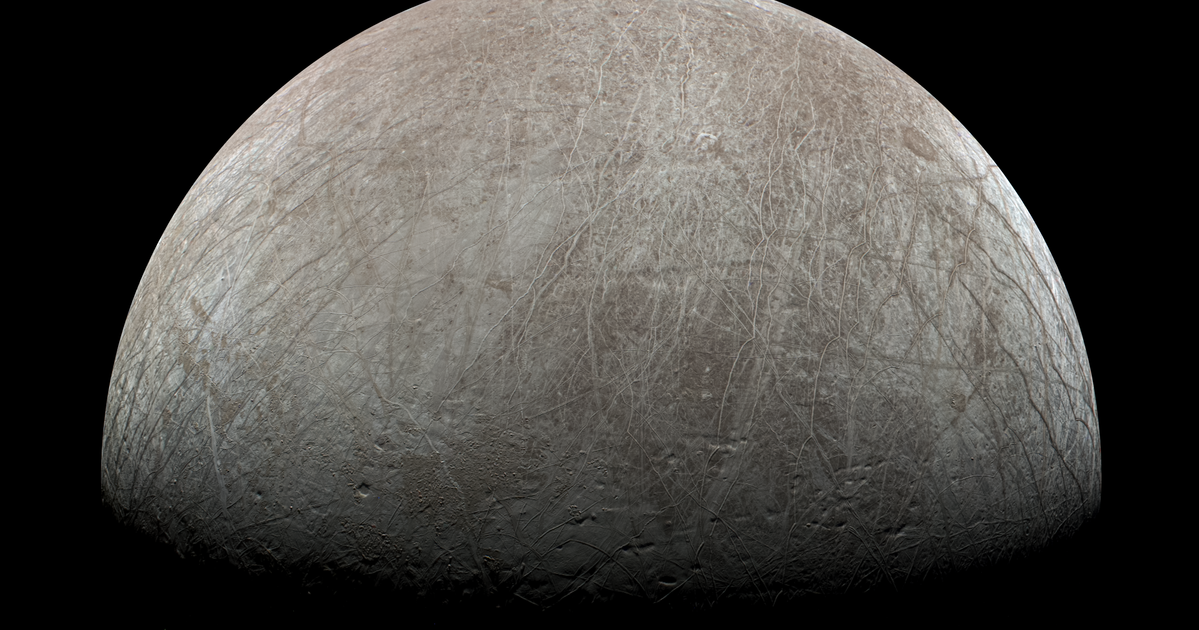One of two new, unknown ice floes may exist on Earth, beneath Antarctica.
Two as yet unknown types of ice may be causing the strange red outline of Jupiter’s icy moon Europa. This discovery dispels many mysteries about the icy moons of the solar system.
At higher pressures and lower temperatures than normal on Earth, ice forms with a structure in which water molecules appear in comparatively larger quantities. This is one possible explanation for the strange chemical findings that indicate Europa’s surface is covered in an unknown material. Astronomers have been able to detect the presence of sodium chloride, commonly known as table salt, in the reddish ice on the moon’s surface.
These basic scientific discoveries are rare these days. We know salt and water well in terrestrial conditions. What lies behind it is completely dark. Here are the celestial bodies on which these familiar ingredients are present in a bizarre form. We have to completely rewrite the metallurgy of the 19th century, but at high pressure and low temperature. These are exciting times
– said Baptiste Journeau, a geologist at the University of Washington, author of the findings published in the Journal of the American Academy.
According to our knowledge, when salt enters water, it dissolves, forming a solution, which lowers the freezing point of water, but it still freezes below a certain temperature, and in the process forms a layered structure called hydrate, in which there are two water molecules for every salt molecule.
Water can be detected on Jupiter’s moons Europa, Ganymede, and Saturn’s moon Enceladus, but the conditions on these worlds are very different from ours. The temperature is much lower, while the depth of the water can be more than a hundred times that of the Mariana Trench.
Photo: Baptiste Journeau/University of Washington
Journaux and his colleagues investigated what happens when more and more salt is added to ice at a pressure of 25,000 atmospheres and minus 123 degrees Celsius in a special diamond anvil. The result was very surprising: despite the effect of anti-icing salt, at high pressure
Ice crystals started to grow.
During the experiments, two new types of ice were found. In one of them, there were 17 water molecules for every two salts, and in the other, there were 13 water molecules for every two salts. None of the new ice crystals resembled those known on Earth, while their chemical properties matched those observed by astronomers, although there is still some scientific work on the latter by comparing infrared spectra.
Pressure is the determining factor in the formation of special types of ice. The version of the 17 water molecule remained stable even with the pressure dropping to -50 degrees – and this type could occur on Earth, deep in the Antarctic ice.
One of the more interesting questions is whether there is life on the water/icy moons of the solar system. To determine this, the European Space Agency’s JUICE probe is expected to reach Ganymede in the summer of 2031, while NASA’s Europa Clipper probe will begin examining Europa in the spring of 2030.
(CNNAnd Science alert)
(Cover Photo:
The strange etched surface of Europe.
picture:
NASA/JPL-Caltech/SwRI/MSSS/Kevin M. Gill/Wikipedia)












































